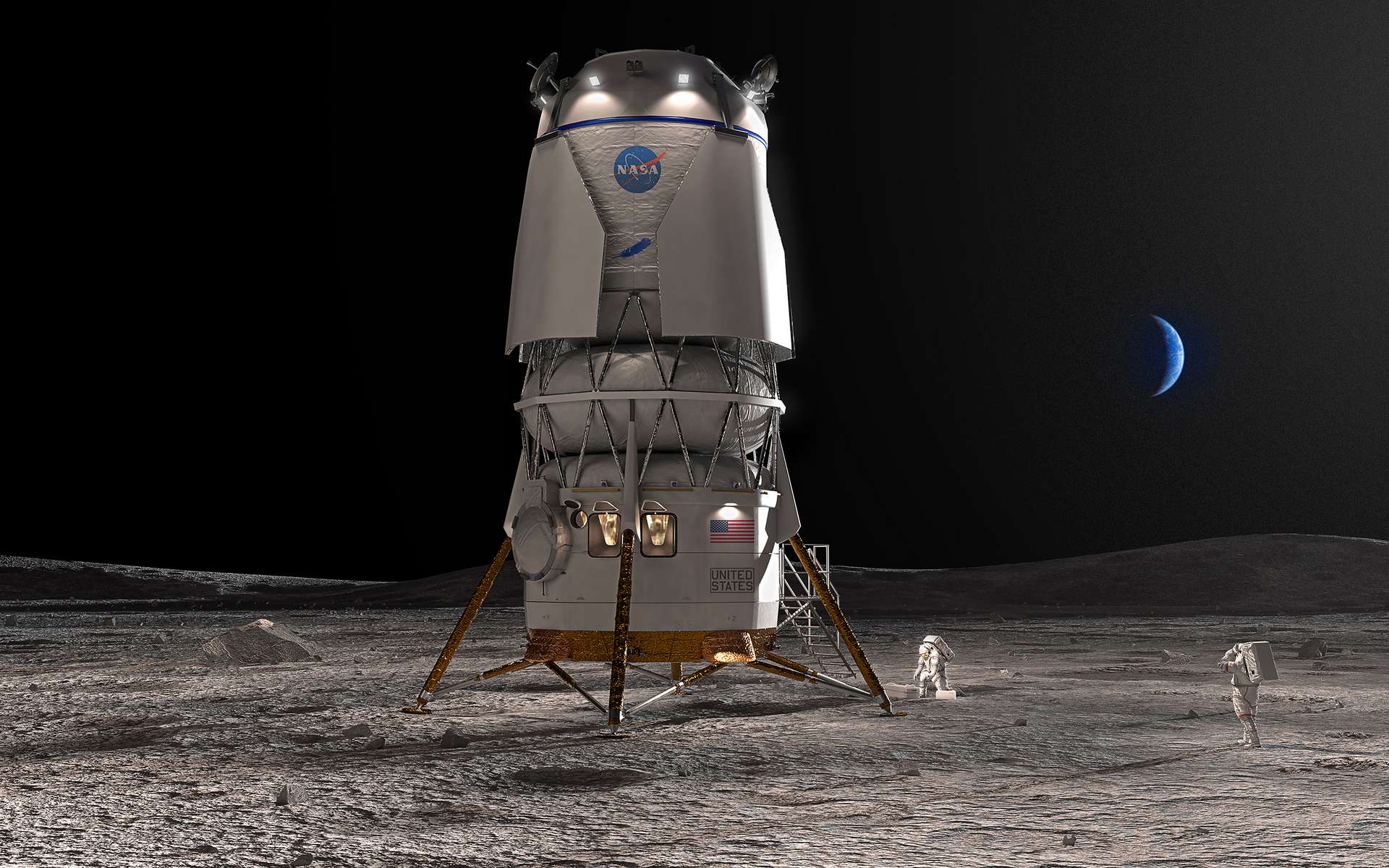
There National Team of Blue Origin will carry out the second lander of the NASA missions. In order not to depend on the only lunar lander provided by SpaceX, the Space Agency was forced by the US Senate to choose a second one. It will be Blue Moon which may even be ready before SpaceX’s Lunar Starship.
You may also be interested
Under pressure from the US Senate, NASA was forced to choose a second lander for the Artemis missions. Indeed, when in April 2021 it chose SpaceX to provide the lander for the first two manned missions to the Moon (Artemis III and IV), experts in the space sector expected that two of the three competing projects would be selected. in order to support the principle of competition and not to depend on a single service provider. NASA has just announced the selection of the National Team of Blue Origin which brings together around the Blue Moon project, Lockheed Martin, Draper, Boeing, Astrobotic and Honeybee Robotics.
Blue Origin did not detail the role of each of these companies, but it is believed that Boeing will carry out the manned and pressurized part which will be installed on the Blue Moon landing platform on which the company has been working for several years. This lander concept was presented in May 2019 at the Satellite 2019 conference during which Jeff Bezos detailed his vision for human exploration of the Moon.
The $3.4 billion contract includes a demonstration mission on Artemis V, which NASA expects no earlier than the end of 2029, as well as an uncrewed test flight of the lander about a year earlier. Artemis V will be the third mission of the Artemis program with a crew landing on the Moon, following the Artemis III and IV missions which will use SpaceX’s Lunar Starship.
A very different vehicle from the Starship
Very different in design and architecture from SpaceX’s lunar Starship, Blue Moon is 16 meters tall with a dry mass of 16 tons and, when filled with propellants (oxygen and liquid hydrogen), it has a mass at launch of 45 tons. It is designed to fit inside the 7 meter diameter fairing of Blue Origin’s New Glenn from which it will be launched. Equipped with four legs (partially folded during launch), it could land safely on a surface with an inclination of less than 25 degrees and achieve a landing with an accuracy better than 25 meters. To communicate with Earth, Blue Origin plans to use a laser communication system which, for the time being, does not convince NASA.
In addition to the version designed to carry astronauts, Blue Origin is planning a cargo version of the lander capable of carrying up to 20 tons to the lunar surface and returning to orbit, or 30 tons on one-way missions.
Another feature of Blue Moon, the “fuel” of its engines can be produced from the natural resources of Mars as well as the hydrogen fuel for the batteries that will provide the electricity necessary for its operation. Oxygen and hydrogen could – in the conditional therefore – be produced from water in the present ice state in situ, whether on the Moon or on Mars.
If you want to know more about Jeff Bezos, founder of Amazon, pioneer of certain technological revolutions of the XXIe century and its dreams of conquering space, we advise you to read Jeff Bezos, from Amazon to the conquest of spaceby Luc Mary, published by the Archipelago.




GIPHY App Key not set. Please check settings